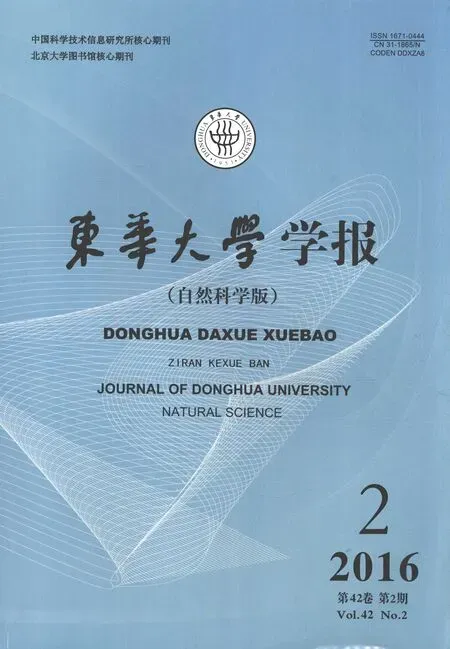基于耗散率的夏季不同年龄人群热舒适性分析
张又升,赵敬德,李雷雷
(东华大学 环境科学与工程学院, 上海 201620)
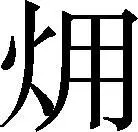
张又升,赵敬德,李雷雷
(东华大学 环境科学与工程学院, 上海 201620)
摘要:以理论分析为手段,建立了夏季空调房间人体平衡系统模型,在基础代谢率的前提下对不同年龄人群耗散率进行了比较分析;同时,对人体的耗散率和预测平均投票数(PMV)指标进行了对比分析,并对不同年龄人群进行调研.结果表明,耗散率指标可以用来评价人体热舒适性,并能反映不同年龄段人群的热舒适感觉.
关键词:耗散率; 热舒适; 不同年龄人群

1数学模型
1.1人体模型

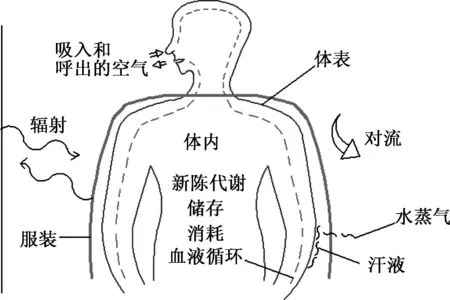
图1 人体热力()平衡系统Fig.1 Thermodynamics (exergy) balance of human-body

Ein-Eout=Estore+Econsume
(1)
Ein=Emet+Einhaled+Ecore-w+Eshell-w+Eabsorbed
(2)
Eout=Eexhaled+Eem+Econ+Esw
(3)
Estore=Ecore+Eshell
(4)


1.3人体热舒适性评价指标
PMV是评价人体热舒适性的一种常用指标,+3、+2、+1、0、-1、-2、-3分别代表人们热感觉的7个等级值,分别对应于热、温暖、较温暖、适中、较凉、凉、冷,其计算式为
(5)
(6)
(7)
(8)

PMV值反映了人体内部产生的热量与人向周围环境散失热量的平衡程度,表明群体对环境热感觉投票的平均值,主要通过估算人体活动代谢率以及服装的隔热值获得,同时还和环境空气温湿度、平均辐射温度、相对空气流速有关.另外,从式(5)右边每一项的系数也可以看出PMV是一个估算值.
PMV适用的群体是健康的成年男性和女性,而对不同年龄段的人群(儿童和老人)的适用性有待考虑;而从HEC的推理计算过程看,其适用于不同年龄段的群体.
2实际算例
2.1研究对象
本文以上海地区典型夏季某办公室为研究对象进行计算分析,房间大小为4.8m×3.2m×3.5m(长×宽×高),假设室内设定恒定的温度(26℃)和相对湿度(60%).采用KANOMAX 6004 型热线风速仪测量人体周围气流速度和房间温度,其风速测量精度为±(指示值的5%+0.1)m/s,风温测量精度为±1℃,进行多次测量取平均值. 采用testo 830-T4型红外测温仪(分辨率为0.1℃,精度为±0.5℃)测量人体皮肤表面温度和衣服表面温度,多次测量取平均值.室外参数根据文献[15]查得,文中一些参数根据文献[16]获得.
因为不同的人体在不同活动状态下其机体代谢率不同,故本文主要针对人体在基础代谢状态下进行分析,基础代谢率可根据文献[14]中的公式(如式(6)所示)得出.
基础代谢率(W/m2)=20.2×耗氧量(L/h)/体表面积(m2)
(6)
式(6)中的体表面积可根据Stevenson公式(如式(7)所示)计算得出.
体表面积(m2)=0.006 1×身高(cm)+0.012 8×体重(kg)-0.152 9
(7)
不同年龄段人群的基础代谢率如表1所示.

表1 正常基础代谢率平均值
2.2计算分析


(a) 男性
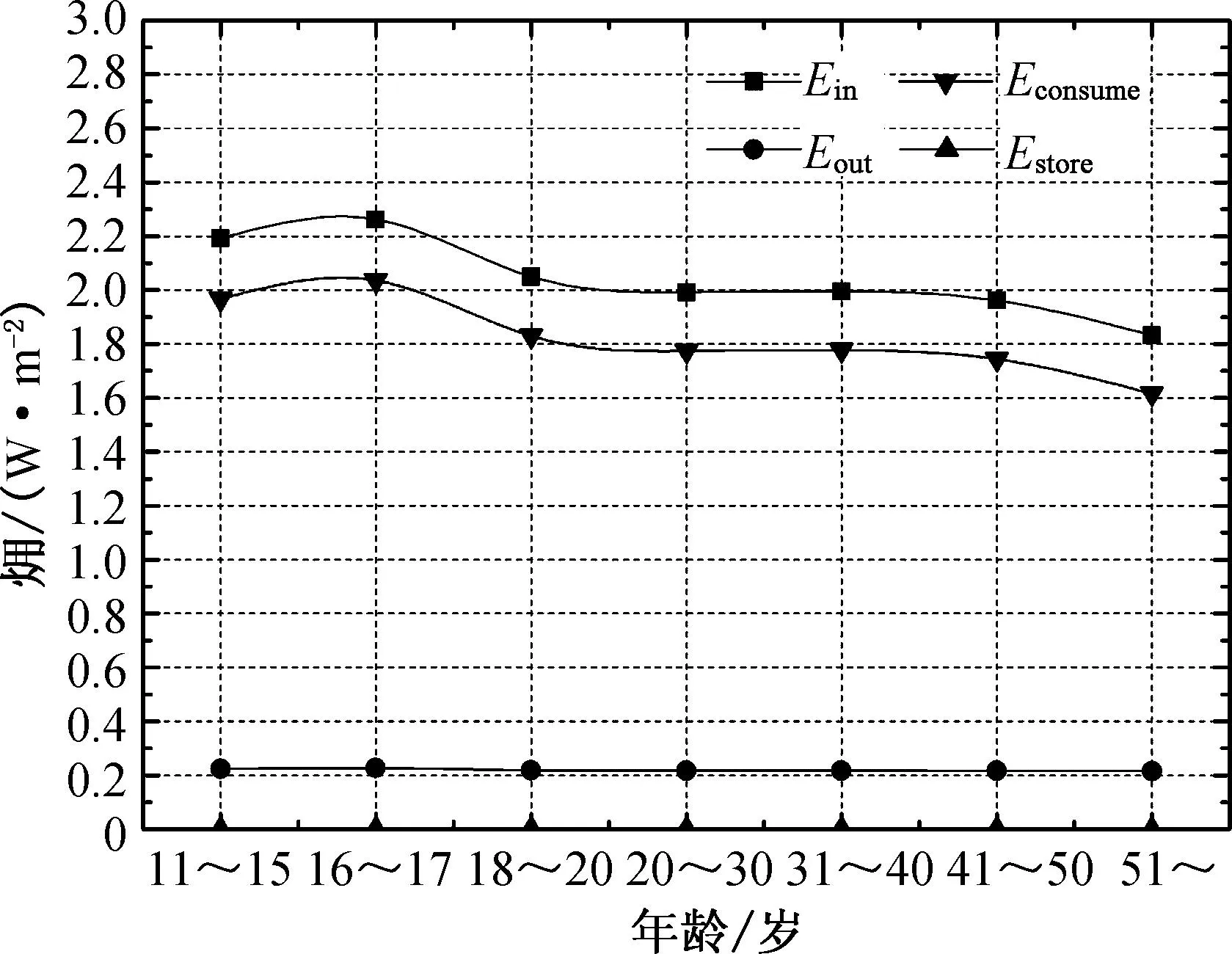
(b)女性
不同年龄人群的HEC和PMV的关系如图3所示.由图3可知,在室内外环境相同条件下,17岁之前HEC值较大,这是因为该年龄段人群生理调节快,基础代谢率大;18~50岁的男性不同人群HEC值在1.86W/m2左右(女性在1.77W/m2左右),因为该人群身体生理调节和基础代谢稳定;由于老人的基础代谢率比成年人小,生理调节慢,故HEC值在50岁后明显变小;另外,年龄段相同,不同性别其HEC值也不相同,男性比女性的HEC值大.图3中不同年龄人群的PMV变化趋势和HEC相同,但是PMV值均在-0.5~-0.1,均在人体舒适范围内[2].
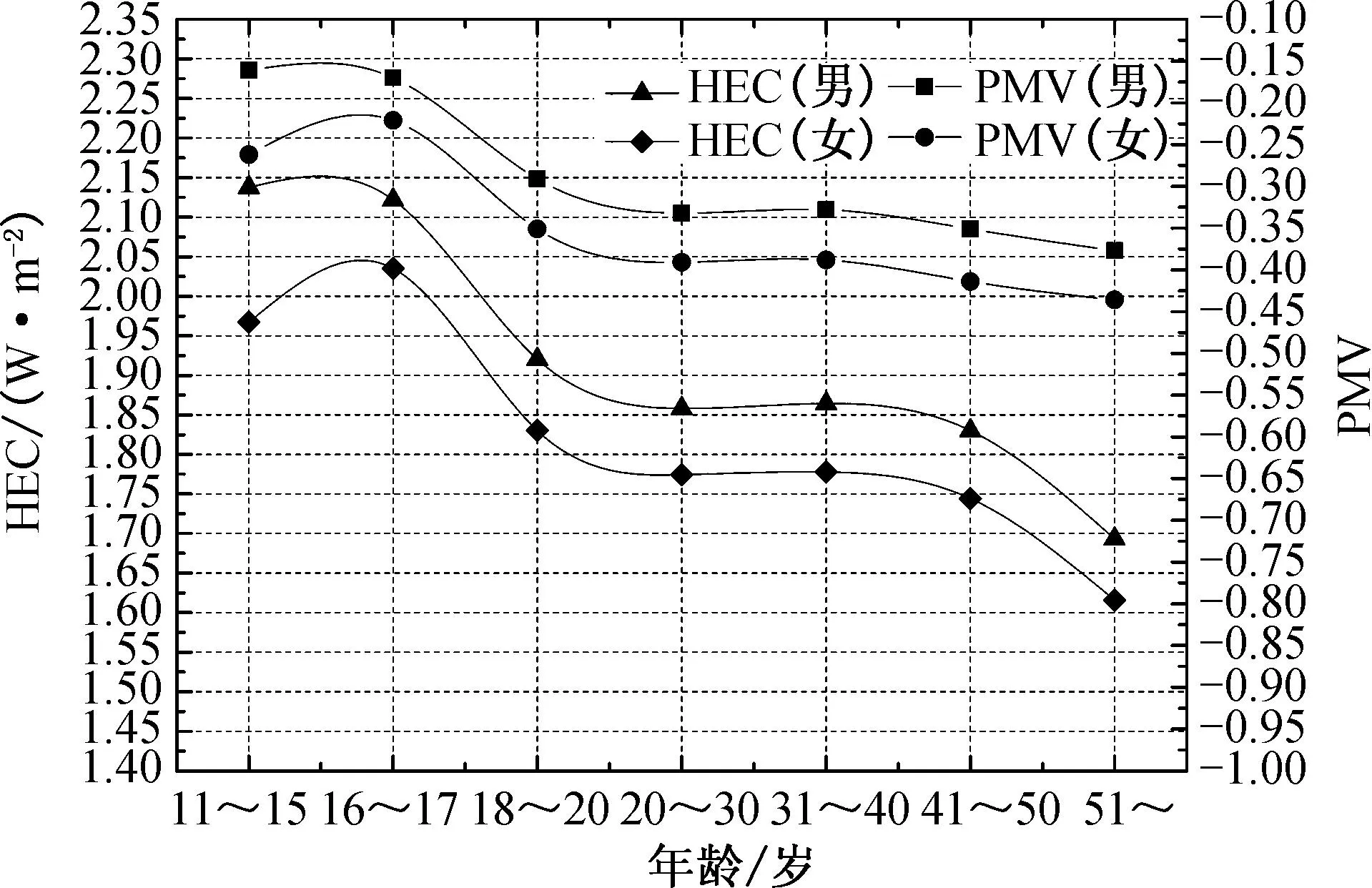
图3 不同年龄人群的HEC和PMV的关系Fig.3 Relationship between HEC and PMV of different age pepole groups


(a)男性

(b) 女性
不同年龄人群PMV值随室内温度的变化关系如图5所示.由图5可知,不同年龄人群随着房间温度降低,其PMV值减小,但是,当温度高于25℃时,不同年龄人群的PMV值均在-0.5~0.5,均在人体舒适范围内[2].
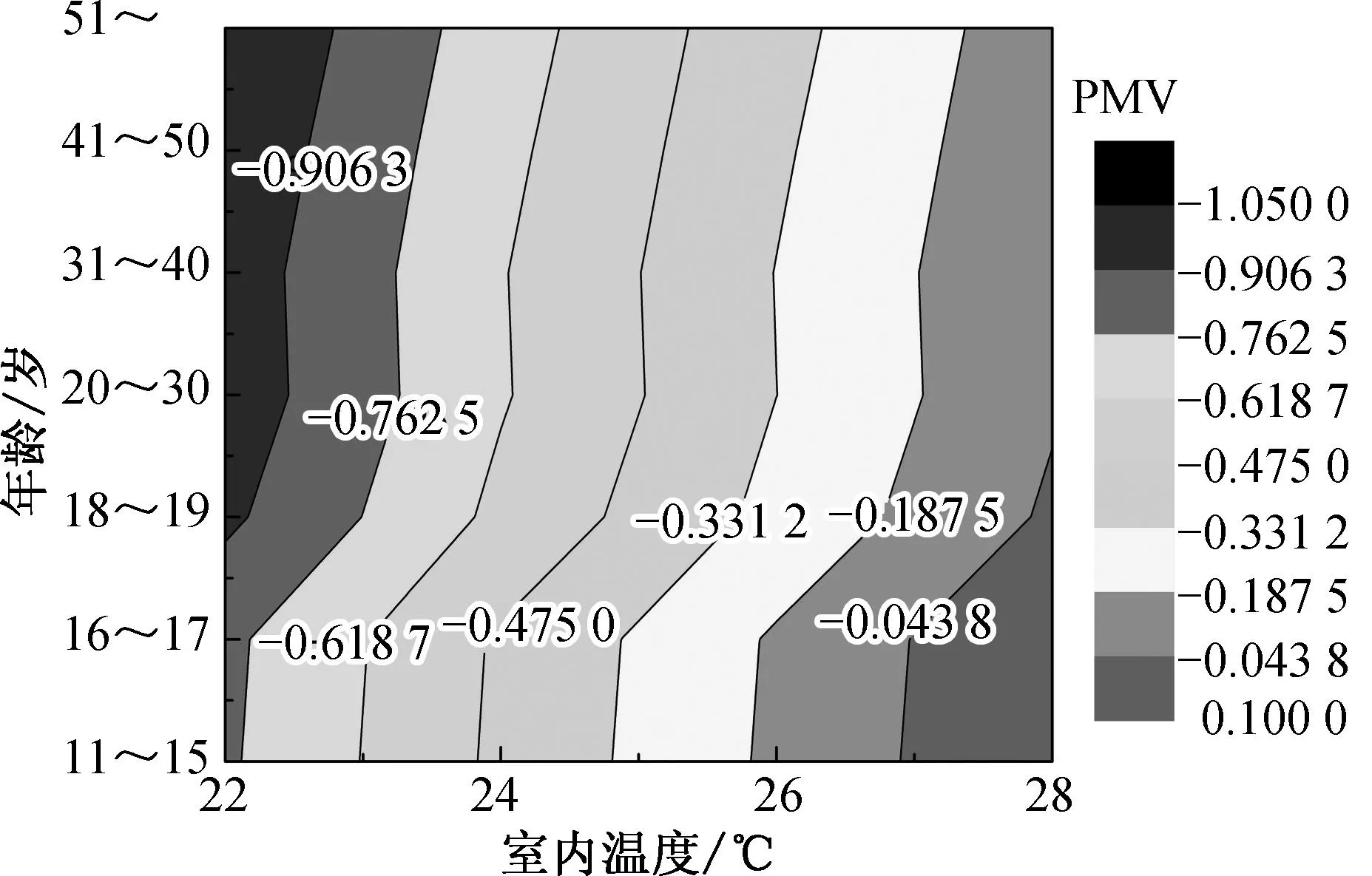
(a) 男性
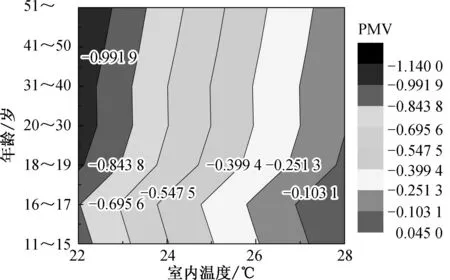
(b) 女性
由图3~5的分析可知,HEC指标可以用来评价人体热舒适感觉,且不同年龄人群在相同环境中其HEC值不同,但是,根据PMV评判不同年龄段人群在相同环境中其热舒适感觉均在舒适范围内.
本文对500名不同年龄人群做了调研,在相同室内外环境中,分析不同年龄人群热舒适感觉.调研对象为10岁以上不同年龄段人群(包括某辅导机构学生、东华大学学生、东华大学老年大学、松江区敬老院等群体);调研时间是夏季(7、8月份)上海典型高温段;调研主要内容是被调研者感觉最舒适时空调房间的温度值.
根据数理统计学知识对调研结果进行处理,以年龄21~30岁调研者为例,图6所示为拟合的正态分布曲线N(μ,σ2),其服从正态分布N(25.47,0.882),即该年龄段的大部分人感觉空调房间温度为25.47℃左右时热感觉舒适.根据调研结果拟合的正态分布曲线得到不同年龄人的热感觉最舒适时空调房间温度值如图7所示.结果表明,不同年龄段人群的最佳热舒适感所对应的房间温度不同,结合图4和5可知,PMV指标不能准确反映60岁以上老人群体和11~20岁人群的热舒适感,而HEC作为评价人体的热舒适性指标更能反映不同人群的热舒适感觉.
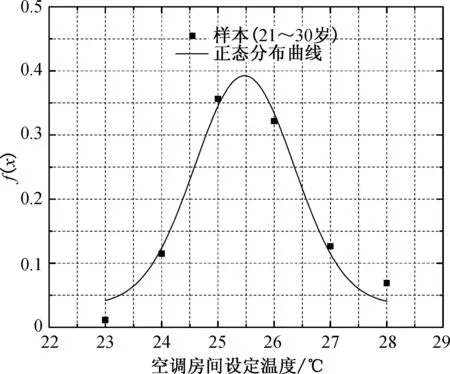
图6 被调研者热舒适感觉温度的正态分布曲线图Fig.6 The normal distribution curve of temperatures corresponding to the certain thermal comfort feeling of the persons being surveyed
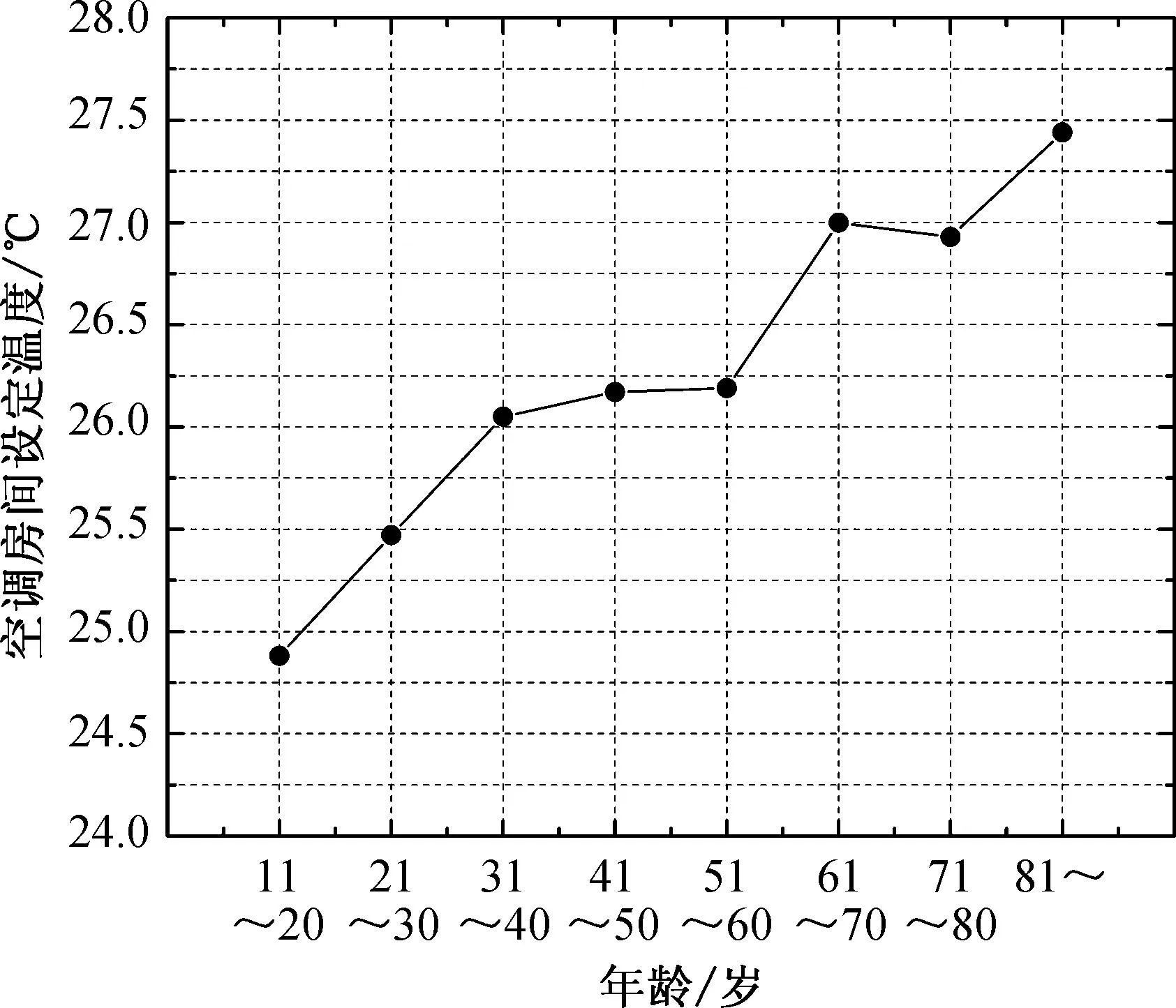
图7 不同年龄人群最舒适热感觉对应的温度值Fig.7 The temperatures corresponding to the most comfortable thermal feeling of different age groups
3结语
本文运用HEC指标和PMV指标对不同年龄段人的热舒适性进行比较,并结合调研结果进行分析,得出以下结论.

(2) 在室内外环境相同条件下,17岁之前HEC值较大,因为该年龄段人群生理调节快,基础代谢率大;18~50岁的不同男性人群HEC值在1.86W/m2左右(女性在1.77 W/m2左右),因为该人群生理调节和基础代谢稳定;由于老人的基础代谢率比成年人小,生理调节慢,故HEC值在50岁后明显变小.

(4) 不同年龄段人群的最佳热舒适感所对应的房间温度不同,PMV指标不能准确反映60岁以上老人群体和11~20岁人群的热舒适感.
(5) HEC可以作为评价人体的热舒适性指标,并且其能反映不同年龄段人群的热舒适感觉.
参考文献
[1] FANGER P O. Thermal comfort:Analysis and applications in environmental engineering[M].NewYork:McGraw-Hill,1970.
[2] Ergonomics of the thermal environment-analytical determination and interpretation of thermal comfort using calculation of the PMV and PPD indices and local thermal comfort criteria: ISO 7730—2005 [S].
[3] Thermal environmental conditions for human occupancy: ANSI/ASHRAE Standard 55—2010 [S].
[4] WANG H Q, HE C H, LIU Z Q,et al.Dynamic evaluation of thermal comfort environment of air-conditioned buildings[J].Building and Environment, 2005,41(11):1522-1529.
[5] 刘蔚巍,连之伟,邓启红.人体热舒适客观评价指标[J].中南大学学报(自然科学版),2011,42(2):521-526.
[6] PREK M. Exergy analysis of thermal comfort[J]. Int J Exergy, 2004,1(3):303-315.
[7] PREK M. Thermodynamic analysis of human heat and mass transfer and their impact on thermal comfort[J].International Journal of Heat Mass Transfer, 2005,48:731-739.
[8] PREK M, BUTALA V. Principles of exergy analysis of human heat and mass exchange with the indoor environment[J]. International Journal of Heat Mass Transfer,2010,53:5806-5814.
[9] TOKUNAGA K, SHUKUYA M. Human-body exergy balance calculation under unsteady state conditions[J].Building and Environment, 2011,46(11):2220-2229.
[10] SCHWEIKER M, SHUKUYA M. Adaptive comfort from the viewpoint of human body exergy consumption[J]. Building and Environment, 2011,51:351-360.
[11] MADY C E K, ALBUQUERQUE C, FERNANDES T L, et al. Exergy performance of the human body under physical activities[J].Energy,2013,62 :370-378.
[12] ALA-JUUSELA M, SHUKUYA M. Human body exergy consumption and thermal comfort of an office worker in typical and extreme weather conditions in Finland[J]. Building and Environment, 2014,76:249-257.
[13] SIMONE A, KOLARIK J, IWAMATSU T, et al. A relation between calculated human body exergy consumption rate and subjectively assessed thermal sensation[J]. Energy and Buildings,2011,43(1):1-9.
[14] 朱大年.生理学[M].7版.北京:人民卫生出版社,2008.
[15] 民用建筑供暖通风与空气调节设计规范:GB 50736—2012[S].
[16] SHUKUYA M. Exergy theory and applications in the built environment[M]. London:Springer,2013.
Thermal Comfort Analysis Based on Exergy Consumption Rate for Different Age People Groups in Summer
ZHANGYou-sheng,ZHAOJing-de,LILei-lei
(School of Environmental Science and Engineering, Donghua University, Shanghai 201620, China)
Abstract:By means of exergy theory analysis, an exergy balance model was established for human body in building environment in summer and the exergy consumption rate of different age people groups was compared and analyzed under the premise of the basal metabolic rate. Meanwhile, the exergy consumption rate and the predicted mean vote (PMV) index of human body were compared, and a questionnaire survey was carried out,aiming at different age people groups. The result shows that exergy consumption rate can not only be an index to estimate the human body thermal comfort, but respond the thermal comfort feeling of different age people groups.
Key words:exergy consumption rate; thermal comfort;different age people groups
文章编号:1671-0444(2016)02-0268-05
收稿日期:2015-03-23
基金项目:上海市自然科学基金资助项目(13ZR1401500)
作者简介:张又升(1990—),女,重庆人,硕士研究生,研究方向为空调系统分析.E-mail:15202153592@163.com 赵敬德(联系人),男,副教授, E-mail:zhaojingde@dhu.edu.cn
中图分类号:TU 119.1
文献标志码:A

